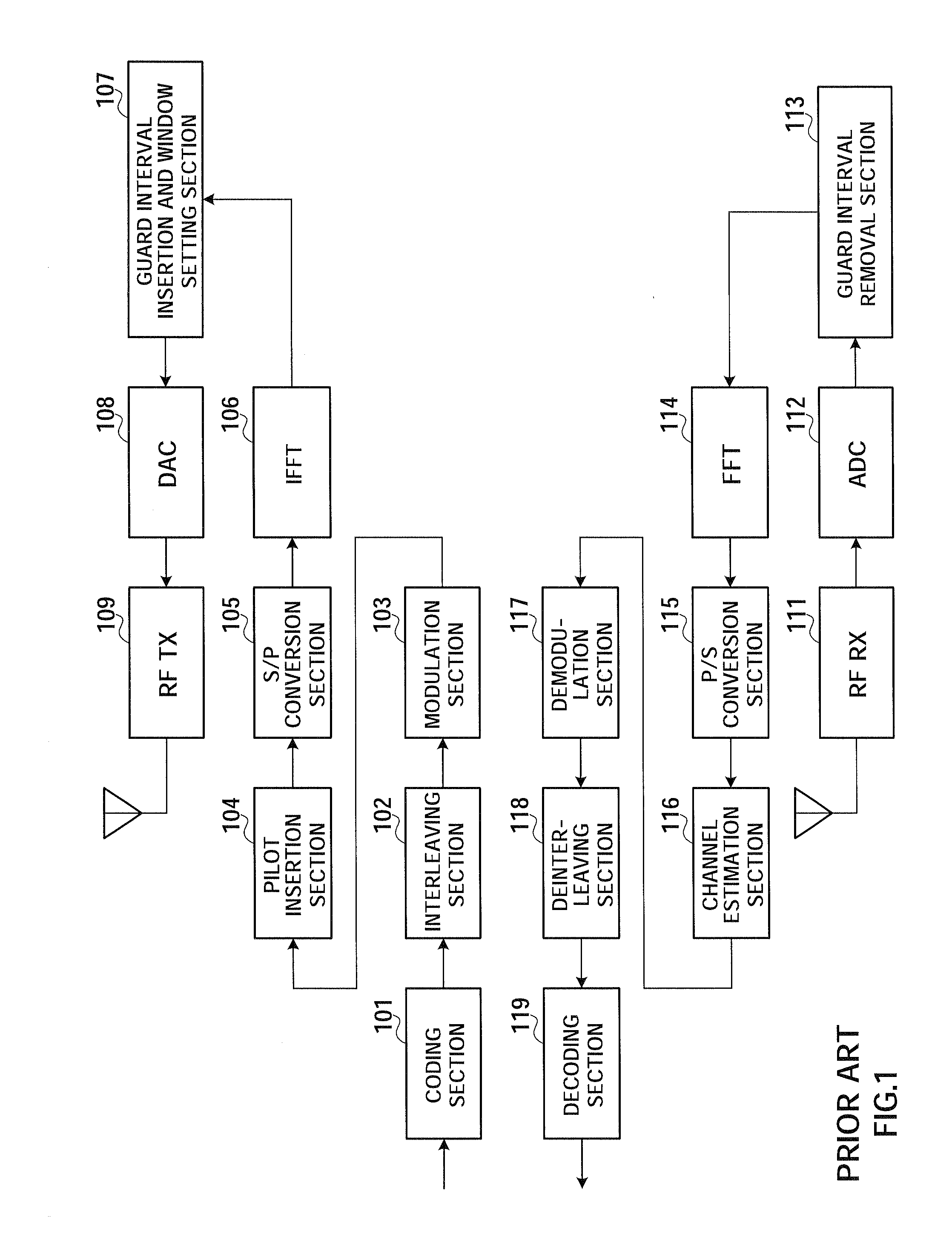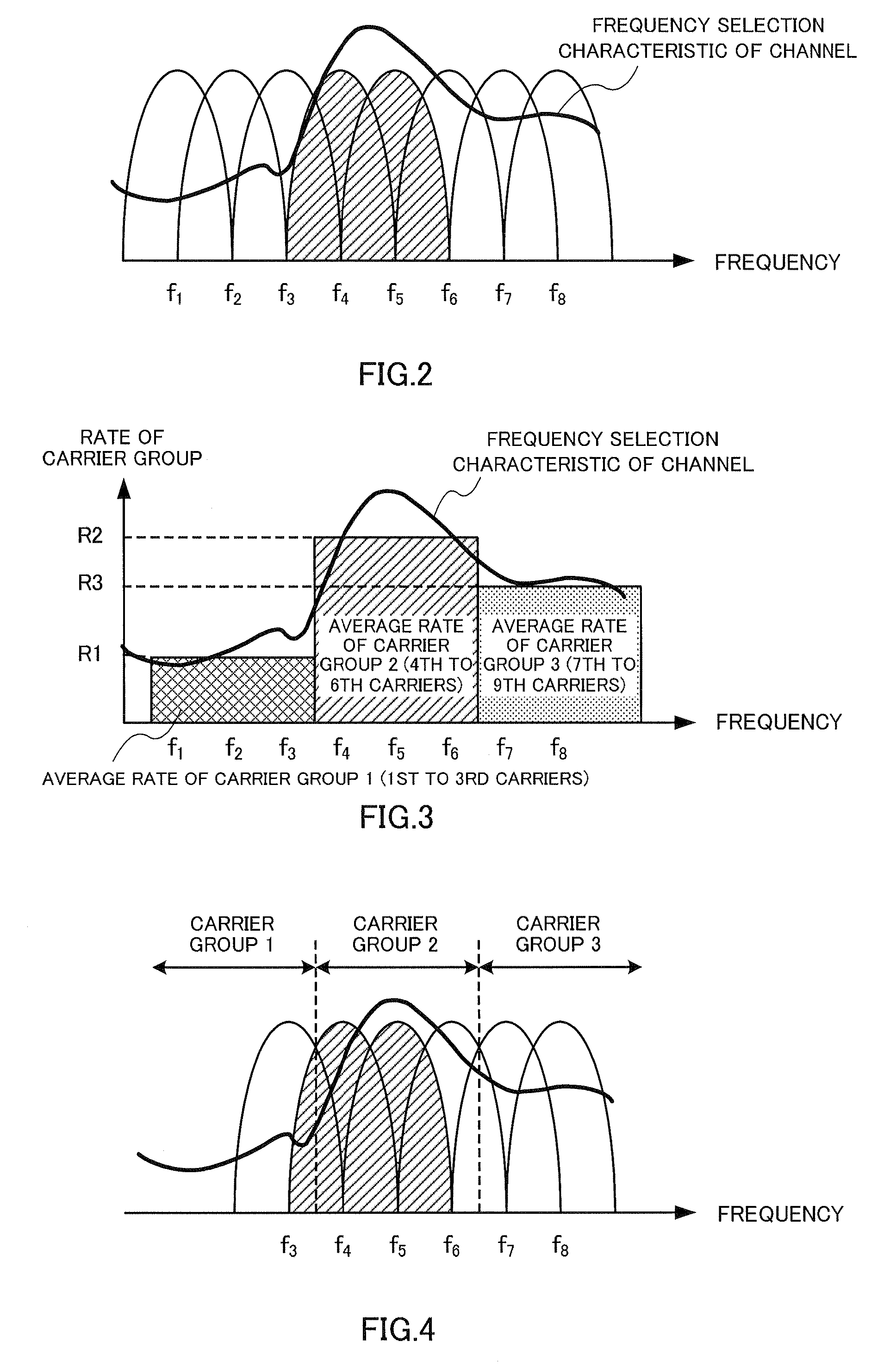Transmitting Apparatus, Receiving Apparatus, Communication System and Communication Method
a technology of transmission apparatus and receiving apparatus, applied in the field of transmission apparatus, reception apparatus, communication system and communication method, can solve the problems of system performance decline, power efficiency low, and significant decrease in interference between symbols (isi), so as to improve information transmission efficiency and interference resistance performan
- Summary
- Abstract
- Description
- Claims
- Application Information
AI Technical Summary
Benefits of technology
Problems solved by technology
Method used
Image
Examples
embodiment
[0032] Puncturing is a method of changing an information transmission rate and efficiency. When, for example, puncturing is performed on a convolutional code having a coding rate of 1 / 2, assume that an output sequence of the convolutional code after interleaving is {A1B1A2B2A3B3 . . . } and that 2 bits are deleted from every 6 bits output. The code then has a coding rate of 3 / 4 and the bit output after the puncturing becomes {A1B1A2B3A4B4A5B6A7B7A8B9 . . . }. However, when 2 bits are deleted from every 4 bits output, the code has a coding rate of 2 / 3 and the bit output after the puncturing becomes {A1B1A2A3B3A4A5B5A6 . . . }. For decoding, when 0 is inserted in a position where puncturing is performed, the decoding method by a code having a coding rate of 1 / 2 can be used as is. Therefore, through puncturing, it is possible to provide flexibility for coding and perform rate matching effectively, thereby enabling easier use. With the present invention, by grouping all subcarriers in a...
PUM
 Login to View More
Login to View More Abstract
Description
Claims
Application Information
 Login to View More
Login to View More - R&D
- Intellectual Property
- Life Sciences
- Materials
- Tech Scout
- Unparalleled Data Quality
- Higher Quality Content
- 60% Fewer Hallucinations
Browse by: Latest US Patents, China's latest patents, Technical Efficacy Thesaurus, Application Domain, Technology Topic, Popular Technical Reports.
© 2025 PatSnap. All rights reserved.Legal|Privacy policy|Modern Slavery Act Transparency Statement|Sitemap|About US| Contact US: help@patsnap.com



